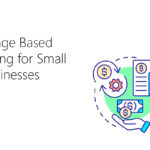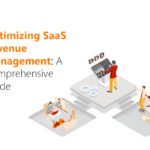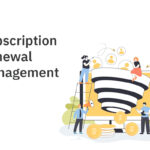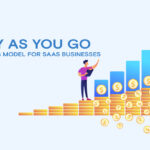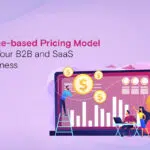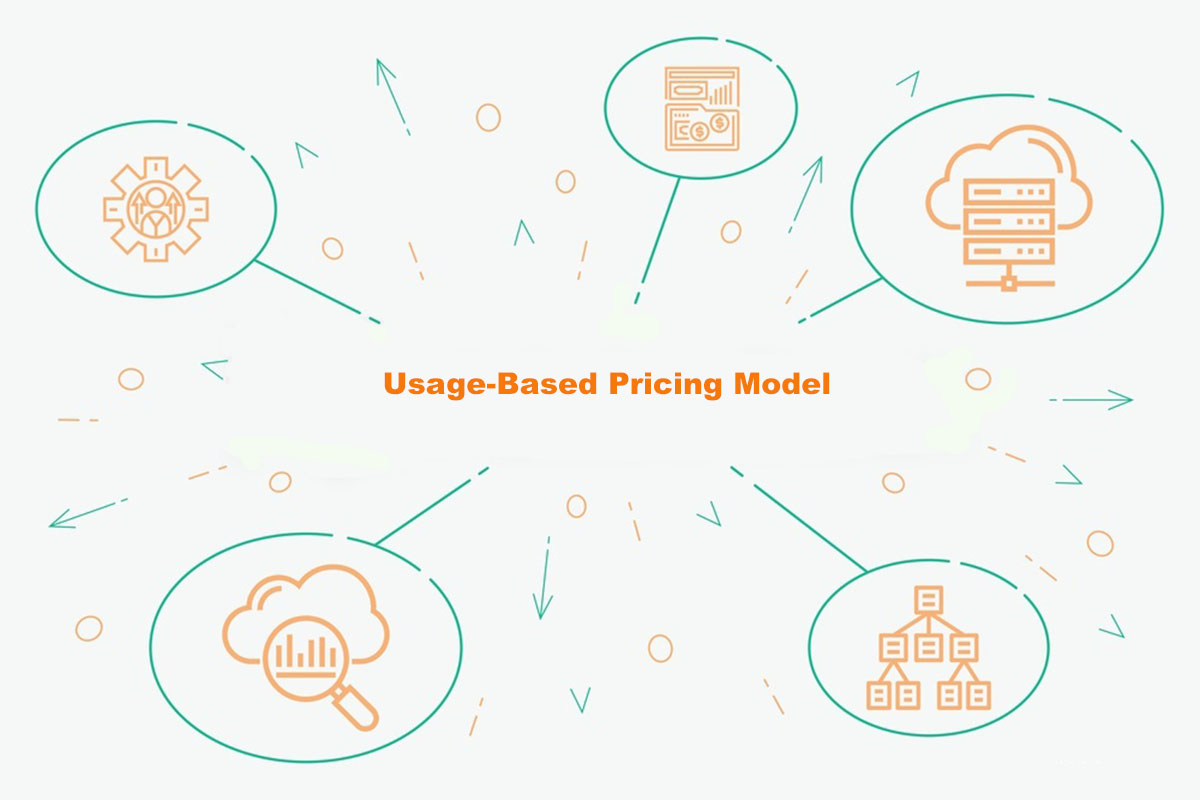
The Price Is Right—A 2021 Basic Guide Of SaaS Usage-Based Pricing Model, Advantages, Challenges, & Solution
Pricing is the most important factor in Research, Product Development, Sales, and Marketing. Price optimization is the first component that materializes the penetration of the product or service in the market, strengthens its roots, and concludes the profit margins.
However, it has been observed that whatever your venture is—Startup, SMB, or Enterprise—it is unlikely that the research and development departments spend much time to determine what pricing model, which pricing strategy, or how a combination of pricing tactics can turn the table around.
SaaS Businesses are facing relatively more struggle of survival against the growing net of competition every other minute. Every day several could-be-promising Startups or once-thriving SMBs or highly-penetrated Enterprises are either closing down their operations or dream projects or are meagerly meeting the ends to stay in the competition.
If you are a SaaS company and already in the mid of the fuss or do not want to trap into the mess, then fine-tune your logic and market demand, and get it aligned with the customer’s purchasing behaviors to tame it in the favor of the business as well as the customer.
It is important to understand the science behind the right pricing at the right time to attract engagements, ensure conversions, and maintain customer loyalty.
So, let’s explore what is the pricing plan for your SaaS company? How revising the pricing plans can turn the table around, and foremost, how you can manage it seamlessly without spending already-diminishing valuable resources?
Get it started with learning the different types of pricing models.
SaaS Pricing Models
Based on the niche and the exclusivity of the SaaS, companies charge differently for their subscriptions. Flat pricing, tiered-pricing, per-user pricing, or freemium pricing—to some extent, all of these pricing models, one way or another, are the filtered or customized forms of following two broad categories of pricing models:
- Flat Rate Pricing Model—Static rate for a product or service for single pricing.
- Usage-Based Pricing Model—Dynamic rates based on usage, features, users, time, etc.
Dynamic Pricing—The New Trend of SaaS Billing
Selling one-time software licenses was the type of flat-pricing, whereas these days SaaS providers are exploring more options to grab the handful share of revenue and a maximum chunk of customers for their SaaS.
Usage-Based pricing also called metered pricing, coupled with the vertical strategies is a growing trend of billing across the industries. The dynamic pricing, particularly, allows SaaS companies to charge their customers only for their usage. In other terms, it expands the net of possibilities of earning more from across the businesses while maintaining the factor of a reliable billing in clients as per their needs and budget.
Pay-As-You-Go—The Usage-Based Pricing Model for SaaS Subscriptions
It can be defined as a pricing strategy that requires you to pay only for what services, features, or products you have consumed in a recurring billing cycle.
Based on the consumption or usage, it can fluctuate in either direction—backward or forward. In comparison, the flat-pricing models eliminate the increased profit margins for the SaaS providers in case a startup or an enterprise, both, are paying the same fixed subscription charges however the gap in their usage is remarkably widened.
On the other hand, it mounts cost pressure on small businesses concerning their usage. So, Pay-As-You-Go is the win-win pricing strategy to grow recurring revenue and attract more subscribers.
Types of Usage-Based Pricing
Usage can be incorporated into the subscription pricing in several different ways. Some of the popular ones include:
- Linear or Consumption-Based Pricing
- Features-Based Pricing
- Features-Based Tiered Pricing
- of Users Based Pricing
- of Users Based Tiered Pricing
- Flat Subscription plus Overage Charges
- Flat Subscription plus Exclusive Features Usage Pricing
- Time-Based Consumption Pricing
- Freemium plus Linear Pricing
Advantages of Usage-Based Pricing for SaaS Recurring Billing
Instead of flat-pricing, more and more SaaS companies are looking for better usage-based pricing models to charge their customers and increase their recurring revenues. Each type of usage-based billing has its advantages.
In general, these are the core lucrative reasons, dynamic pricing garnered the attention of SaaS providers:
Profit Possibility
Usage-based pricing gave rise to the opportunities of earning more profit through the metered billing with dynamic pricing. Regardless of their team size and their business pockets, selling subscriptions of the SaaS to all the customers with the same rates reduces the chances of retaining customers from across the category.
SMBs and startups would not prefer to subscribe to an expensive all-inclusive suite full of all the stacks, not of their use, whereas Enterprises won’t sign up if these services are not offering all the solutions they are looking for which essentially means a surge in pricing.
Allowing clients to choose what they need and pay accordingly is the best way to sell SaaS services to every customer of the B2B cycle.
Market Capturing
As much as the individual and customized usage got increased, it helps to bring more and more engagements from across the businesses in the market. SaaS recurring revenue continues to upmarket with more customers consuming personalized SaaS services or products.
Taming Customer’s Consumption Behaviors
It has been observed that usage-based pricing encourages startups and SMBs to sign up for more features or consume more services which brings profit to the SaaS eventually as the dependability and interaction with the client mature the prospects over time. Usage-based billing gradually tames the customer’s usage behavior in favor of the SaaS subscription providers.
Customer Retention
Pay-As-You-Go pricing shows more projections for customer retention. As the subscribers are not bound to pay fixed subscription charges, they can easily choose to upgrade, downgrade, or even pause the subscribed plan. It is a sense of freedom that customers enjoy when they have the power to hold a deal instead of canceling it until they need it again.
Upscaling Demanding Products or Features
Usage-based pricing is the core assistance in research, product development, marketing, and sales. The increasing use or demand of a SaaS feature works as the pragmatic research to enhance the captivity and productivity of the opportunity and generate more leads without spending millions of bucks over market research.
Price Scaling Prospects
Increasing a flat-pricing rate is difficult than increasing the price of the SaaS service or feature based on consumption-based pricing. It has more prospects of hike in prices without disturbing the equilibrium.
Challenges in Usage-Based Pricing for SaaS
Despite some rigorous and highly-lucrative advantages of the user-based pricing model for SaaS Subscriptions, it has some cons too that have emerged as the challenges in subscription management.
Thorough & Repetitive Market Research
Pricing of a plan can not be static for too long. Based on the situation of the market, it has to be revisited which essentially requires allocation of budget, resources, time, and comfort for a thorough and often repetitive market research. To progress the SaaS product as a whole requires some serious considerations.
Unpredictable Revenue
Usage-based pricing takes charge of revenue prediction from the SaaS subscription services providers. Unpredictability can hinder revenue operations, pause or post-pone hardcore business decisions, and deprive them of the long-term business strategy.
Analysis Paralysis
Giving subscribers the authority to choose from across the array of features can cause analysis paralysis. Instead of converting, it can roll-back the leads. Despite the increase in engagements, often the open-end pricing backfires.
Risks of Churn
It is an age of innovation and accessibility that is budding the startups, entrepreneurs, and small businesses everywhere. Usage-based pricing is more attractive for these strata of the business community. Due to their less dependability and more unpredictability in terms of business strength and revenue operations, the risks of churn are also higher among them.
SubscriptionFlow Usage-Based Pricing—An All-Inclusive Solution
Devising and managing usage-based pricing smartly can be made simple and personalized with our highly extensible and practical SaaS Subscription and Recurring Billing Management Platform.
Apart from automating the whole billing and payment process fast, secure, and exclusive, it adds value in the convenience with the innovation of AI-supported automation. SubscriptionFlow gives additional assistance in managing different usage-based pricing models for different clients with a different aspect of time, features, usage, or other consumption of SaaS services.
Automated Billing Operations
From strategizing the pricing and subscription plans to custom invoicing to secure payment receiving in the SaaS merchant’s account, it is a one-stop destination for all the automated RevOps.
AI-Powered Pricing & Subscription Plans or Features Cataloging
SubscriptionFlow offers an intuitive pricing engine that helps you devise data-driven pricing and plan structures for the SaaS subscription and bill the clients according to their usage or consumption.
Pricing Experimentation
SubscriptionFlow helps you to experiment with pricing and expand the revenue lifecycle with attracting more engagements.
AI-supported Recommendations, Risks Detections, & Preventions
Based on the client’s payment and subscription history, SubscriptionFlow can guide you with the upgrade marketing opportunities for individual clients or warns ahead of time the risks in recurring payment processing.
Automated Recurring Revenue Projections
SubscriptionFlow made revenue prediction of usage-based pricing SaaS subscriptions easy, simple, and accurate with its real-time analytics. The run-time monitoring helps SaaS subscription services providers to track KPIs, identify revenue leakages, and reduce the churn rate.






